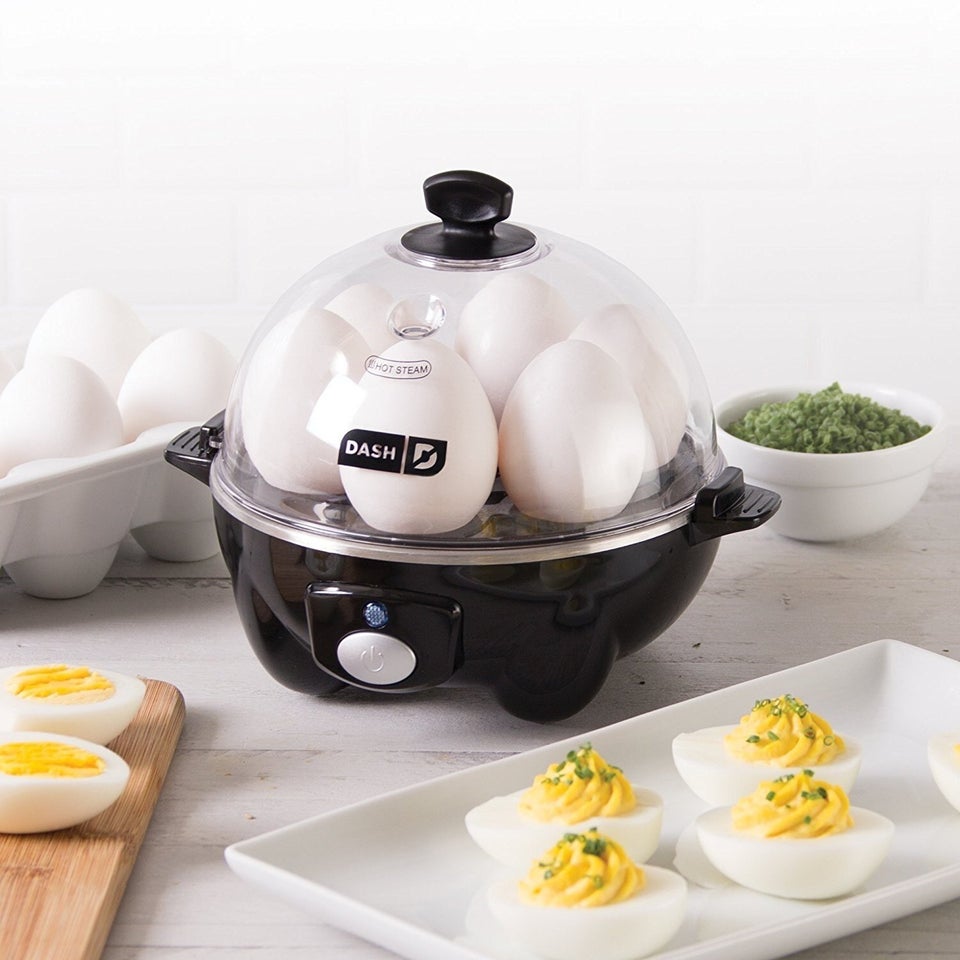A sharp knife is an essential tool for any kitchen, and a chef’s knife is one of the most versatile types out there. It can be used for a range of kitchen tasks, including mincing, slicing and chopping vegetables, fish and meat.
Investing in a quality chef’s knife is a good idea, as it’ll likely be the knife you use most. But how much do you actually need to spend? You can find mass-produced chef’s knives for as cheap as $20 and high-end knives handcrafted by expert bladesmiths for more than $500. Between those extremes are mid-priced knives of varying quality.
We consulted several experts and found that mid-priced knives are ideal for most home cooks. For those passionate about the craft and the luxurious look and feel of high-end knives, a splurge is definitely worth it, but it’s not necessary for everyday tasks.
Whichever knife you choose, keeping it sharp is key. “It’s worth it to splurge on knives if you can maintain the upkeep,” said Palak Patel, a chef at the Institute of Culinary Education. “An expensive, dull knife is worthless in the kitchen.”
With all this in mind, here’s what you need to know about chef’s knives.
Cheaper knives can be less comfortable and often require more sharpening, but more expensive knives require additional care.
While there are always exceptions, cheaper knives generally don’t hold their sharp edge as long as more expensive knives do, and they’re usually less comfortable to use.
“Usually, low-end knives are unbalanced and tire your hand really fast, especially when you are talking about bigger chef knives,” David Santos, chef and founder of Um Segredo Supper Club, told HuffPost. “The craftsmanship is obviously not the same level as higher-end knives, so the handles are usually made out of cheaper materials and you end up with plastics that nick easily or heavy-metal hidden tangs (the non-blade part of the knife) that make them uncomfortable to grip.”
With a high-quality knife, you barely know it’s there, Santos said. “The knife feels like an extension of your hand and it’s comfortable to use,” he said. “It’s light and balanced, and it doesn’t form what are called ‘hot spots’ in your hand from holding it for long periods.”
“Edge retention is another problem,” Santos said. “The steel [in cheaper knives] is usually low quality and softer, so they sharpen well but dull quickly because of the microscopic malleability.”
Understand the differences between Japanese and German-style knives.
In terms of design, the most common types of chef’s knives ― particularly in the mid-range and high-end range – are German and Japanese. Yuval Ochoa, executive chef of Borrachito, said that while traditional Japanese knives have a single bevel (one straight side and one angled side leading to the edge), most Japanese companies now make the more common double-bevel knives (two angled sides) to accommodate the Western market.
The Kitchn explains that the key differences between German-made and Japanese-made Western-style knives are the angle of the edge, shape of the blade, weight, thickness and the type of steel used. A Japanese knife is typically lightweight, has a smaller angle (which makes for a sharper edge), a straighter shape, a thinner blade and harder steel – qualities that make it ideal for precise work and making clean slices. A German knife is often heavier, has a curved shape (perfect for rocking back and forth when chopping), a thicker blade and softer steel. These characteristics make German knives more durable and better suited for robust kitchen tasks like cutting through bones.
“German knives are typically sturdier, but also can be more prone to dulling, so you’ll have to sharpen them more frequently,” Ochoa said. On the flip side, the harder steel of a Japanese knife maintains a sharper edge for longer. However the delicate blade is more prone to chipping and cracking, The Kitchn points out. “Japanese knives are typically a bit more expensive than their German-made counterparts, but you can certainly find a very high-quality German knife in the $100-$200 range,” Ochoa said.
If you’re chopping up something hard, like butternut squash, a super-fancy (and expensive) Japanese knife probably isn’t the best tool for the job.
“One of the reasons those knives are so good is that they’re super-thin and made of very hard, brittle steel that is designed to hold a super-thin edge for slicing more delicate things like fish ― not banging on the cutting board or cutting something hard like a squash,” Lisa McManus, executive editor of America’s Test Kitchen Reviews, said. “You’re going to break the knife and be really sad.”
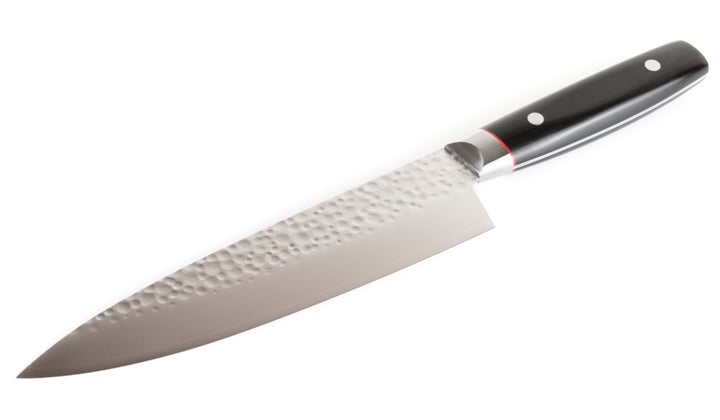
For the average home cook, our experts recommend purchasing a quality knife in the mid-range category (around $80-$150, according to Santos, but quality knives below this price range also exist) for everyday use and honing your knife skills. “You want a knife that can handle the kind of food you’re going to be cooking, and something that you’re not afraid to use every day or take care of,” McManus said.
Carbon steel vs. stainless steel blades.
As far as blade materials go, there are two main types: carbon steel and stainless steel. Knives with carbon steel blades are generally more expensive, but high-end stainless steel knives also exist. Patel said she has both types but prefers carbon steel knives because they are sleeker and lighter.
“Carbon steel knives have sharper edges, sleeker handles and are made with better materials,” Patel said. “They are generally preferred by chefs for their precision while cutting. Sharpening carbon steel knives can be tricky and requires a water stone to maintain the precise blade.” In addition, carbon steel knives need to be washed and thoroughly dried after every use to prevent the blade from rusting.
“Stainless steel knives are the workhorses of the kitchen because of their durability and price,” Patel said. “They are easy to maintain and designed to take a lot of wear and tear from daily use. These knives are easy to sharpen and don’t require a water stone for sharpening.”
Learn how to select a comfortable-feeling knife.
A sharp blade is a given, but a handle that suits the size and shape of your hand is an important consideration that most home chefs may not realize when shopping for a chef’s knife (especially online).
McManus recommends steering clear of knives with handles that prescribe a specific way of holding them. “Some chef’s knives have very specific shapes to the handles that are meant to be ergonomic, but the problem is you don’t always hold the knife the same way as you’re working.” she said.
For something as basic as an onion, for instance, you’re holding your knife three different ways as you dice it. “You’ve got horizontal cuts where you’re holding the knife flat to the board, you’re using the tip when cutting it vertically, and you’re also cutting across the onion with the belly of the knife,” McManus said.
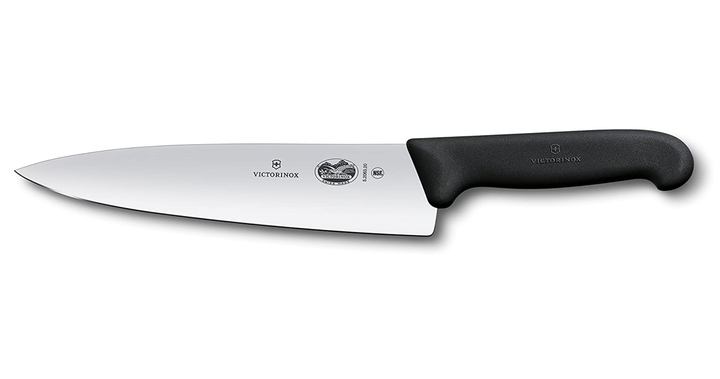
The top knife in America’s Test Kitchen’s rigorous testing is the Victorinox Swiss Army Fibrox Pro 8’’ Chef’s Knife ($37 on Amazon). “Our longtime favorite knife is designed for restaurant workers, people who are going to use it for several hours in a row every day,” McManus said. “It has a very simple, neutral handle that allows for a variety of hand sizes and grips and doesn’t prescribe a certain way for you to hold it. It also has this textured plastic handle that doesn’t get slippery in your hand and stays very comfortable for a long time.”
To ensure the knife you choose fits well in your hand, McManus strongly recommends trying it out at the store if possible; some stores will even have a piece of fruit or vegetable for you to practice on. “It’s a really great thing to do because it’s almost like shopping for shoes, and what might be the best shoe (or knife) for me might not be best for the next person.”
McManus likens the selection experience to wizards picking their wands at Ollivanders in the Harry Potter books. “There’s a feeling you get when you pick your knife up; it naturally pops into your hand and feels like it’s part of you.”
Proper storage and regular sharpening are key.
Regardless of what you decide to spend on a chef’s knife, a few simple care tips will help to ensure it serves you well for many years.
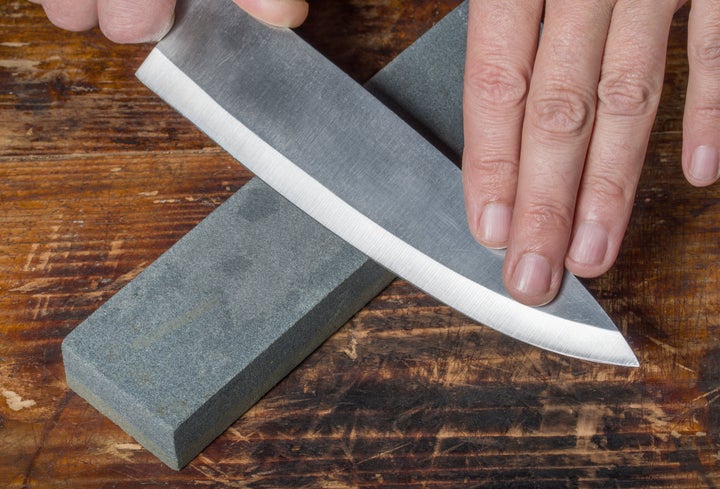
For storage, Santos recommends hanging your knives on a wall, and there are plenty of magnetic knife strips on the market that accomplish this. “Throwing your knives in a drawer is just awful for your knives, unless you have a wooden cover for them,” Santos said. “Butcher blocks can actually dull your knives and the block takes up way too much room on the counter.”
Sharpening is important for the longevity of your knives. “You should at the very least run the knife on a steel every time you use it,” Santos said. “The best way to maintain an edge is by treating it well every time you use it. Honing balances the micro-edge and allows the blade to cut cleaner and helps the life of the edge last longer. Then, when you go to properly sharpen it, it takes less work to get it back to where it needs to be.”
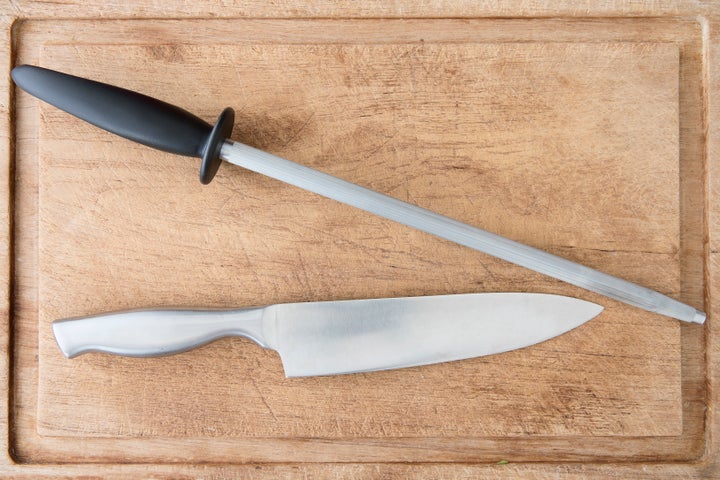
Santos recommends learning how to sharpen your knives with sharpening stones. “Sharpening stones tend to be less harsh on the steel than a mechanical sharpener,” he said. “When you sharpen a knife you are technically wearing away metal. The better you get with stones combined with their fine grit the less you wear your knife away.”
For high-end knives that cost hundreds of dollars, you’ll want to take special care in sharpening, as their blades can be quite thin and brittle. “You can always sharpen a cheap knife on a good sharpening stone, but you should avoid using a cheap sharpener on a good knife,” Ochoa said. “For the everyday home cook, I’d recommend an electric sharpener or a whetstone. When in doubt, have your knives sharpened by a professional with experience.”
